Introduction
When I first observed my own turtles that can turtles eat strawberries exploring a fresh slice of strawberries, the reaction was mixed—some eagerly nibbled while others ignored it completely. Over time, I realized that such treats can only remain truly safe when offered in strict moderation, not as part of their regular diet. Although the fruit carries essential nutrients and contributes a level of hydration, its sugar content raises questions about long-term health and potential stress on digestion. From personal experience, letting a turtle indulge occasionally creates a moment of variety, but it also demands careful observation of their reaction afterward.
As part of a balanced diet, it’s important to understand how Can Turtles Eat Strawberries can affect their overall health. Regularly observing reactions to such treats can help maintain their well-being.
In practice, I often relate the feeding of strawberries to a balance test between curiosity and responsibility. Providing just enough to let the animal experience new textures and flavors has value, but ignoring portion control may lead to more harm than benefit. Understanding how safe fruit is as an occasional treat keeps keepers mindful of turtle well-being. What I’ve consistently found is that a disciplined approach to introducing fruits builds a healthier feeding environment while maintaining focus on a species-appropriate diet that prioritizes stability over indulgence.
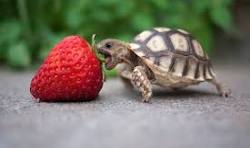
Are Strawberries Safe for Turtles?
Thinking about how Can Turtles Eat Strawberries fits into their diet can be beneficial. It’s essential to prioritize their specific dietary needs while understanding the potential effects of sugar.
Some turtle keepers quickly assume that strawberries are always safe for turtles, but the truth is more layered. In practice, these fruits are loaded with vitamin C, potassium, folic acid, and fiber, all of which bring potential benefits to overall health, including shell strength, better digestion, and longer lifespan. However, my own red-eared turtle once reacted differently when fed a sweet slice—while the hydration effect was noticeable, too much sugar disrupted his regular diet and made me question if a safe amount was truly being followed. That contrast between yes and no answers is why careful observation matters.
From another angle, I’ve seen owners ignore species-specific dietary needs or forget to wash strawberries thoroughly, which leaves harmful pesticides on their surface. Although they look fresh and appealing to both humans and turtles, the right way is always moderation, offering them only as occasional treats rather than daily staples. When used properly, these vitamins and nutrients can enrich a turtle’s feeding plan, but if neglected, the habit risks disturbing their long-term health. The balance comes from knowing when to offer a slice and when restraint keeps your turtle thriving.
When considering fruits like strawberries, one must ask, Can Turtles Eat Strawberries without compromising health? This question remains crucial for every turtle owner.
Many keepers often inquire, Can Turtles Eat Strawberries safely? It’s vital to evaluate the frequency and portion sizes to ensure a healthy balance.
Furthermore, the question Can Turtles Eat Strawberries arises when discussing their occasional treats. It’s important to maintain moderation for their health.
Nutritional Value of Strawberries for Turtles
When discussing the nutritional value of strawberries, I often notice that many turtle keepers focus on their vitamin C content but overlook how fiber and potassium also play roles in supporting a turtle’s digestion and hydration. From my own experience, offering fresh and sweet pieces occasionally can bring visible enjoyment while supplying nutrients that complement a turtle’s dietary needs. The benefits extend to improved shell strength and even better overall health when such fruits are introduced the right way, in safe amount, and balanced with leafy greens or protein sources. I’ve observed that my own red eared turtle reacted well when I gave a carefully washed piece, always mindful of possible pesticides.
On the other hand, these fruits are still treats, and moderation is the truth behind keeping turtles safe in the long run. The natural sugar in fruits can interfere with long-term health if overused, particularly for species with longer lifespan where regular diet balance becomes critical. Folic acid and other vitamins are undoubtedly useful, but without attention to species differences and dietary needs, the yes to strawberries might quickly turn into a no for daily use. I always remind fellow keepers that while humans might enjoy them freely, turtles thrive when such items are introduced in a structured, observant manner that respects their natural feeding patterns.
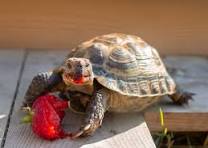
Benefits of Feeding Strawberries
When I first observed turtles responding to strawberries, I noticed their genuine enjoyment of the flavor and how even a small piece could feel like a rare treat for them. The hydration from their high water content quickly supports digestion and helps maintain a balanced immune system. For turtles that may otherwise rely heavily on leafy greens, introducing a limited serving of strawberries provides variety while offering vitamin C and natural antioxidants that contribute to cell health, overall immunity, and even shell health. My own red eared turtles showed positive reaction when given fresh, sweet fruit, especially when offered in smaller pieces that avoided any choking hazard.
On the nutritional side, strawberries carry fiber that aids digestion, and their mix of nutrients like vitamin A, calcium, and traces of folic acid encourage better health and potentially longer lifespan. Although their sugar levels mean they should remain occasional treat items, the benefits cannot be ignored: improved hydration, boosted immunity, and even support for shell strength when part of a balanced plan. By offering once or twice a month, about the size of a thumbnail or a turtle’s head depending on whether you keep large turtles or smaller turtles, you create both flavor satisfaction and practical dietary benefits without drifting toward tummy problems, nutrient imbalance, or weight gain.
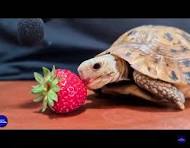
Risks of Feeding Too Many Strawberries
In my experience raising turtles, giving them frequent strawberries can cause visible tummy problems that quickly shift their digestion away from balance. Excess sugar doesn’t just stay a simple sweet treat—over time, it contributes to weight gain and even nutrient imbalance. I’ve noticed that when the calcium and phosphorus ratio is disturbed, shell problems become more likely, making the turtle’s long-term health vulnerable. What looks like harmless enjoyment of a fruit may quietly weaken their immune system, while an unbalanced diet full of fruits leads to more than just temporary stomach discomfort.
Too much fruit can undermine a turtle’s main diet of leafy greens, protein, and essential veggies—the sources that truly support cell health, shell strength, and lifespan.
Even when you wash or soak strawberries to reduce pesticides and pesticide residues, the deeper issue is portioning.
I’ve seen red eared turtles and other species react negatively when fed 1-2 strawberries in quick succession, instead of a small piece or thumbnail-sized serving once or twice a month.
Overfeeding in this way goes against the safe amount, and the supposed nutrients can instead cause digestive issues, reduce hydration, and weaken health overall.
That’s why I always observe, monitor, and watch how a turtle reacts whenever I cut, chop, and offer smaller pieces—making sure this rare treat never disrupts the delicate rhythm of their diet.
How Often Can Turtles Eat Strawberries?
In my own care routines, I’ve found that even though turtles get excited about sweet fruit, the frequency matters more than the size of the serving. Offering once or twice a month is a balanced rhythm that prevents overexposure to excess sugar while still giving them the hydration and light nutrients they seem to enjoy. For smaller turtles, I always stick to a small piece, sometimes no larger than a thumbnail, while large turtles may safely manage about 1-2 strawberries if you cut them down. I’ve noticed that connecting portion to the turtle’s body scale, like comparing to the turtle’s head, works as a reliable measure across species.
Still, observation is essential. Even if the serving size seems right, I always check how the turtle reacts after the treat. Giving less is often safer because digestion can vary with individual health, age, and the rest of the diet. Over time, I’ve learned that repeating the treat too frequently—even when using the right portion size—creates patterns of dependency, and turtles may ignore their greens. That’s why I rotate strawberries with other fruits, ensuring that this bright snack remains occasional, not a routine fixture.
How to Feed Strawberries Safely
When I first tried giving my turtles strawberries, I realized the biggest step isn’t the fruit itself, but how you handle it before offering. Always soak them in clean water with a pinch of baking soda; this helps remove hidden pesticides that cling to the skin. A gentle rinse followed by a quick scrub using a soft fruit brush can make a big difference in keeping your turtle’s health stable. Once clean, I usually chop the berry into smaller pieces because leaving it whole increases the choking hazard.
After preparing the fruit, I make sure to monitor closely. Sometimes turtles show signs of an upset stomach, so it’s better to wash and cut carefully and then observe each reaction during and after feeding. I’ve seen some turtles handle strawberries with no issues, while others needed me to pull back right away. The balance lies in testing gently, watching how your turtle adapts, and not rushing the process.
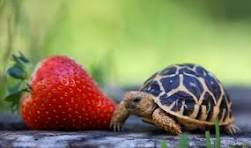
Can Baby Turtles Eat Strawberries?
When looking at baby turtles, it’s tempting to assume that they can handle the same fruits as their older companions. In practice, I’ve noticed that the high sugar in strawberries doesn’t match the early growth stage where protein from pellets or small insects is far more valuable. Their tiny bodies can’t yet handle excess sweetness the way older, bigger ones might, and introducing such treats too soon may disrupt digestion and slow natural development. From my own setup, I offered a small piece once to test, but quickly returned to a regular diet of balanced leafy greens, veggies, and supplemental animal sources because the younger ones showed stronger energy levels that way.
Some species are known to have difficulties with fruits. Therefore, understanding Can Turtles Eat Strawberries for various species is crucial for their care.
In exploring alternatives, one may wonder, Can Turtles Eat Strawberries, or are there better options for them? It’s important to consider their natural dietary habits.
That doesn’t mean strawberries are completely off the table for life. A rare treat after a few months can provide variety, but it should always be given in moderation. I prefer to wash, cut, and serve in smaller pieces, carefully watching how each hatchling reacts. Even then, I use them less than once a month, and only after ensuring that their main diet is solid with adequate calcium balance for shell health and lifespan. The truth is, while it feels enjoyable to see turtles nibbling a sweet treat, focusing first on nutrients, hydration, and steady immune system support builds a healthier foundation.
Lastly, many ask, Can Turtles Eat Strawberries regularly? This question can guide owners in maintaining a healthy feeding schedule.
Ultimately, understanding Can Turtles Eat Strawberries is vital for turtle health and overall well-being. Ensure that every feeding is done with care.
To summarize, the recurring inquiry, Can Turtles Eat Strawberries, must be approached thoughtfully, balancing their needs with delicious treats.
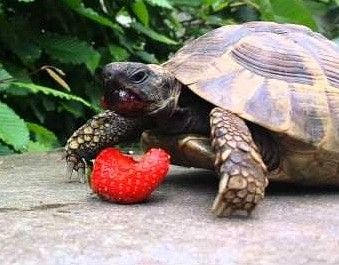
What Turtle Species Should Avoid Strawberries
In conclusion, Can Turtles Eat Strawberries is not just a question; it’s a vital part of understanding turtle care and nutrition.
Finally, let’s wrap up with the pivotal question: Can Turtles Eat Strawberries? This phrase encapsulates the ongoing discussion regarding turtle nutrition.
From my own observations, not every turtle reacts to strawberries the same way. Species like desert tortoises have adapted to low-moisture environments and their bodies thrive on low sugar foods; too much fruit disrupts their nutrients balance and can weaken their shell over time. Even some aquatic turtles that rely more on animal protein often experience digestion issues if fruit becomes a common part of their diet. I once noticed a group of red-eared sliders that were offered berries too often—they ignored their regular meals, and within weeks, signs of stress and reduced activity became clear.
In practice, avoiding strawberries for these turtles is not about labeling them unsafe but about understanding how moderation works in context. Turtles that naturally depend on leafy greens, insects, or fish should not rely on sweet treats, as it risks creating an unbalanced diet. Careful keepers I’ve met emphasize focusing on what supports long-term health rather than occasional novelty. While some species can handle fruits in tiny amounts, for those mentioned above, strawberries are best left out of the regular diet to prevent silent harm building over time.
Best Alternatives to Strawberries in a Turtle’s Diet
When I noticed my own turtles losing interest in fruits, I began exploring leafy greens like romaine, kale, and dandelion greens. These not only support better shell health but also mirror what many turtles encounter in the wild. Adding collard greens with a mix of vegetables such as carrots, squash, bell peppers, and zucchini gave variety while preventing the sugar spikes that often come with strawberries. I’ve observed that turtles stay more active and maintain steadier digestion when such options dominate their meals rather than fruit-heavy treats.
For owners who want more than just plants, introducing natural protein sources like earthworms, crickets, boiled eggs, and even feeder fish makes a big difference, especially for younger turtles. On warmer days, I also let mine nibble on aquatic plants such as duckweed or water lettuce, which they approach eagerly. As occasional flavor shifts, blueberries, apples, seeds, melon, or even a slice of mango have proven to be exciting without overwhelming their system. Balancing these foods keeps their diet sustainable while offering enrichment far beyond strawberries.
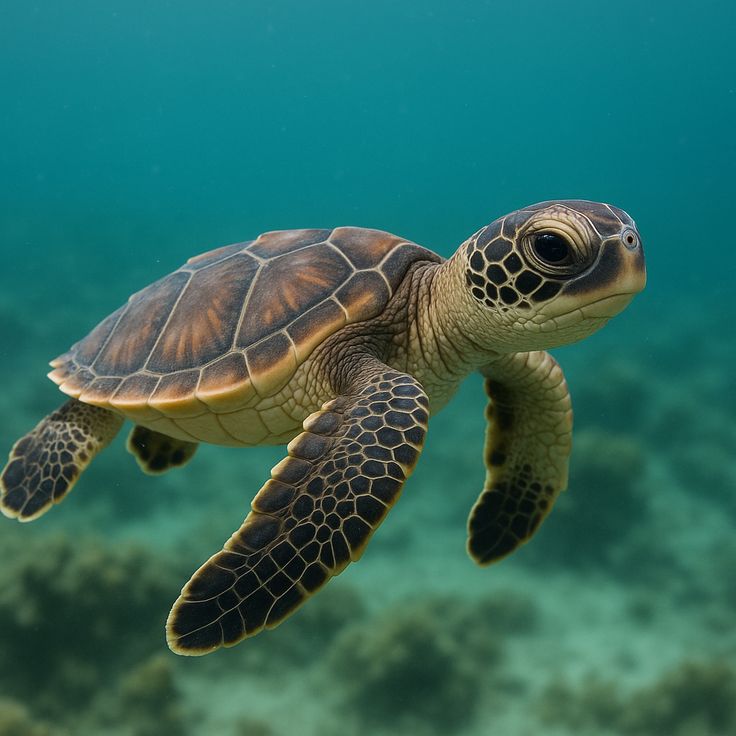
FAQs
Q1. Do turtles benefit from the water and hydration found in strawberries?
Yes, the hydration from water in these fruits can support the immune system and aid digestion, while the presence of fiber, vitamin C, and antioxidants contributes to overall cell health.
Q2. Are strawberries completely safe for turtles, or should they only be given in moderation?
They are considered safe when offered as treats. However, the sugar and high nutrients can affect long-term health, so a regular diet should not rely on them for digestion or daily needs.
Q3. Should owners wash strawberries to remove pesticides before feeding different species?
Yes, always wash thoroughly. Pesticides can harm a turtle’s dietary needs and affect a red eared turtle’s health, shell strength, or even lifespan. Offering fresh and sweet fruits in the right way ensures the truth: the answer is yes, not no, when offered in a safe amount.
Q4. Do hydration, vitamin C, and antioxidants bring more immunity or lead to digestive issues?
The flavor and enjoyment can help, but excessive vitamin A, calcium, and sugar may stress the stomach, leading to weight gain, shell health decline, or an unbalanced diet if pesticide residues remain after a poor wash.
Q5. How many times a month should turtles eat strawberries—once or twice?
Portions should be a small piece, like a thumbnail or the size of a turtle’s head. Large turtles may handle 1-2 strawberries, while smaller turtles should eat less.
Q6. What’s the right way to soak, rinse, and scrub fruits? Can Turtles Eat Strawberries?
Use clean water with baking soda, gently scrub with a fruit brush, and chop into smaller pieces to reduce choking hazard. Always monitor for upset stomach, observe closely, and note any reaction. Can Turtles Eat Strawberries safely if these steps are followed?
Q7. What should owners of red eared turtles know before feeding this rare treat?
They may enjoy it, but due to sugar, frequent servings can weaken health. Their main diet should be leafy greens, veggies, and protein. Fruits like strawberries must remain limited to once a week, with each piece washed, cut into small pieces, and observed as the turtle reacts.
Q8. What are the tummy problems if turtles eat too much?
Excess causes weight gain, nutrient imbalance, shell problems, and disrupts the calcium to phosphorus ratio.
Q9. What is a safe portion size for a red eared turtle?
A piece the size of a fingernail, thumbnail, or small chunk is best, ensuring careful feeding without overindulgence.
Q10. Which leafy greens or vegetables can be better than strawberries?
Offer romaine, kale, dandelion greens, or collard greens. Add carrots, squash, bell peppers, and zucchini. For variety, include fruits like blueberries, apples, melon, or mango, and provide protein sources like earthworms, crickets, boiled eggs, feeder fish, or even aquatic plants such as duckweed and water lettuce.
Q11. Can baby turtles eat strawberries, or should they focus on protein?
Baby turtles rely heavily on protein from pellets and insects. Due to sugar, they may not handle it well until older and bigger.
Q12. Which species should avoid them—like desert tortoises or aquatic turtles?
Yes, desert tortoises thrive on low sugar diets, while some aquatic turtles, including red-eared sliders, need more animal protein and balanced nutrients.
Q13. Can turtles eat strawberry tops and leaves?
Yes, in small amounts, strawberry tops and leaves are safe, slightly nutritious, and fine as an occasional treat, but never a main food.
Q14. Are strawberry leaves toxic to pets?
Generally, no. When consumed in safe amounts, they won’t harm a stomach of common pets.
Q15. Which human foods fit a turtle’s natural diet?
Besides strawberries, human foods like vegetables, leafy greens, fruits such as apples or bananas can be fed in moderation within balanced plans.
Q16. Are strawberries truly pet friendly?
Yes, their vitamins, hydration, and health benefits in small amounts outweigh risks, though sugar remains the limiting factor.
Q17. Do strawberries actually attract mice and other rodents?
Yes, the sweet smell and taste act as a food source for mice, which may be drawn near turtle enclosures if fruit leftovers remain.